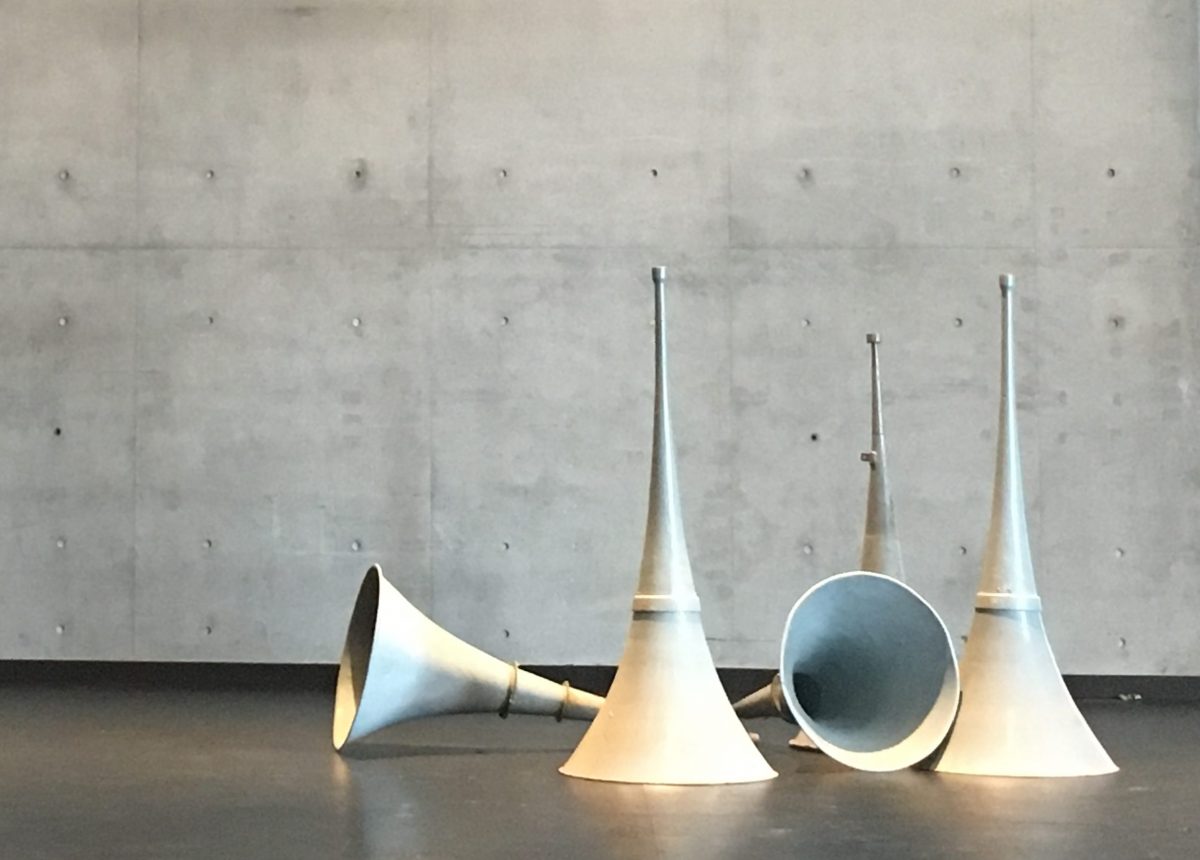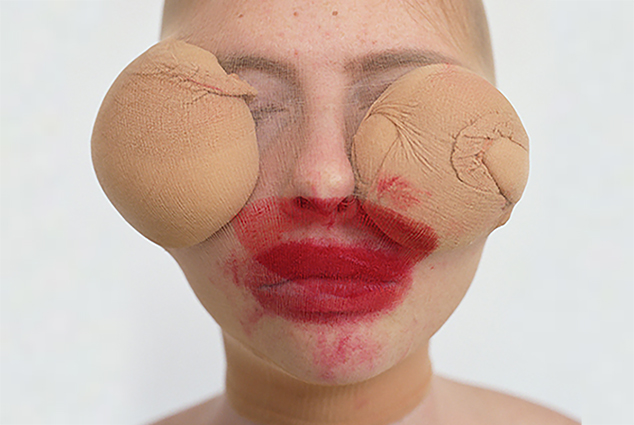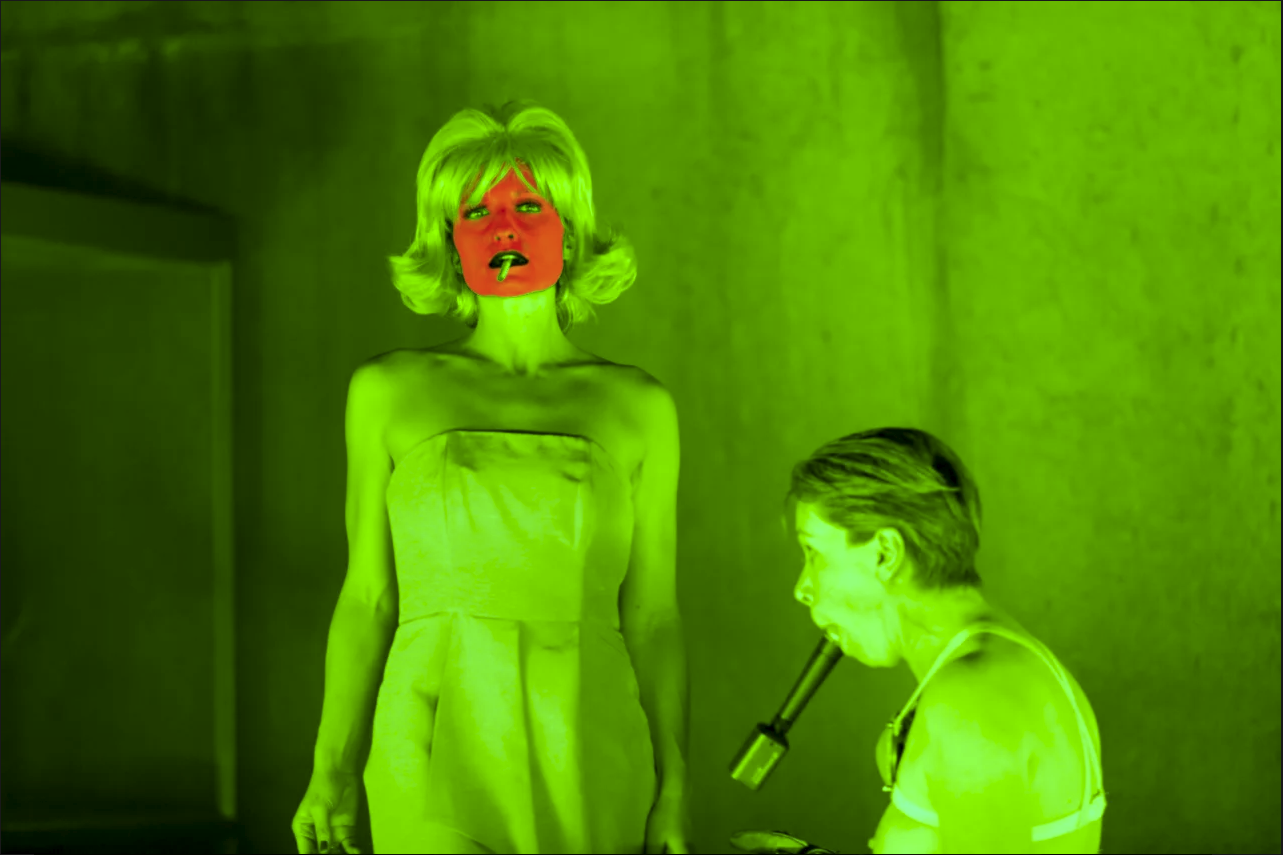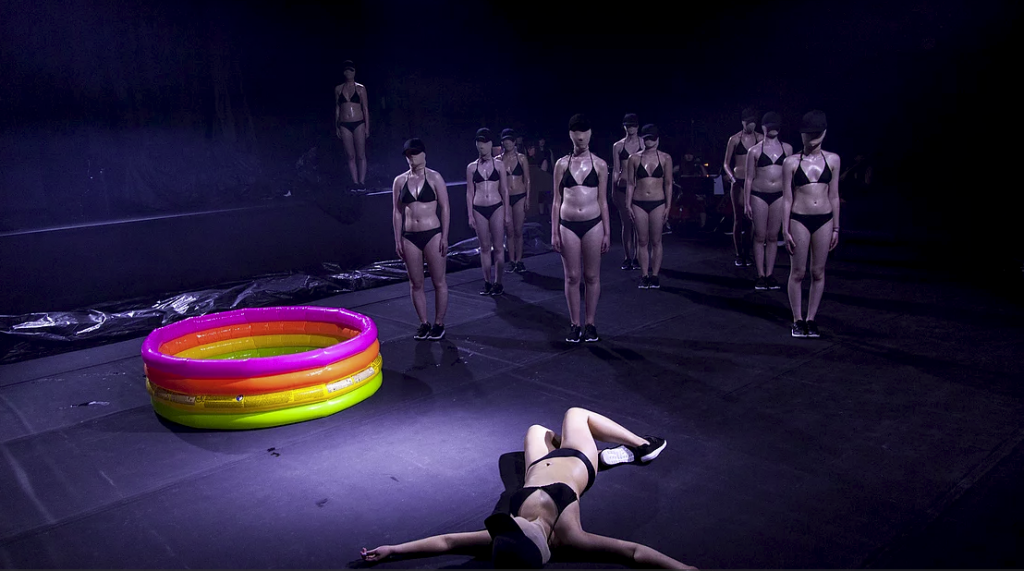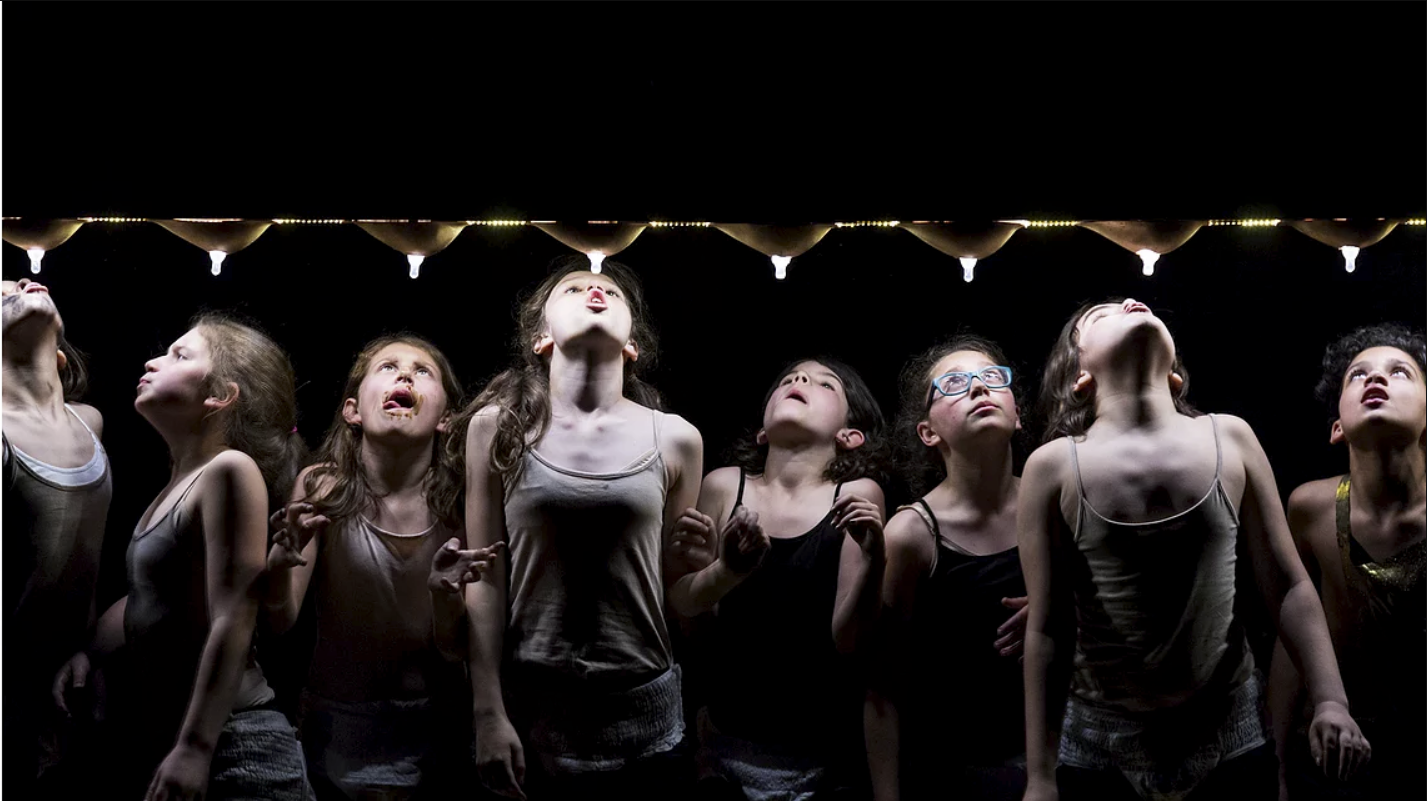VOCAL MOBBING, PRELANGUAGE &
SECRET CODES
An interview with Damien Ricketson, composer of The Howling Girls
By Pierce Wilcox
The first thing Damien Ricketson does is shatter my notion of the composer as a driven scribbler cooped up in their ivory tower. ‘It hasn’t been one of those situations where I sit in my bedroom, concoct a score, then it gets handed to a director,’ the composer of The Howling Girls tells me. He sees the entire project as a co-creation between him and director Adena Jacobs, where the typical division of labour is blurred; she was on board from the beginning, and he’s still in the room playing a creative role as the project moves into staging rehearsals.
They were in sync from the beginning, he explains, with a shared interest building a opera that took on the human voice itself. He tells me they were interested in ‘what it means to have a voice: both literally as in the singing voice, and politically as in agency.’ Their early ideas shared this common thread, covering everything from Ophelia’s moment of drowning in Hamlet being exploded out into an ‘aquatic howl against her situation’ to the Slavic myth of Rusalka, familiar in pop culture from The Little Mermaid, ‘again about a girl having to sacrifice her voice in order to fulfil her desires.’
The work crystallised when both Damien and Adena read Susan Faludi’s book The Terror Dream: Fear and Fantasy in Post-9/11 America, which includes the infamous story of five girls presenting at hospitals in post-9/11 New York City unable to speak for no medical reason. ‘We’d both been reading this book through the Trump election campaign,’ Damien tells me. ‘It seemed a very terrifying end point for this book.’
Written in 2007, Faludi’s book seems to foreshadow the direction an anxious America and the West would take through to the present. ‘She [Faludi] tracks how female commentary just… shrinks in the years in the wake of the September 11 attacks, and how the mythology of this John Wayne type, cowboy-cum-fireman, your Strong-Jawed Man, is put back to the fore as the protector and the saviour.’ For Adena and Damien, it gave shape to their ideas and yoked them to a feminist political undercurrent. ‘It’s associated with this whole notion of having a voice, losing your voice, and trying to regain your voice.’
Damien goes out of his way to assure me that they’re not telling the story of these girls, or any story as you’d conventionally define it. ‘There’s no narrative, there’s no libretto, there’s no orchestra! A lot of the foundations of what you might call opera are not there.’
It’s easy to imagine this as difficult, cerebral art – the terror of every marketing department – but Damien is going for the opposite. ‘It’s an attempt to create a music that almost bypasses the brain and acts directly on the body. In terms of an audience experience, it’s… direct, visceral, primal.’ Not everyone has the cultural references to process the depths of some avant-garde performance, but everyone knows what it’s like to scream.
‘There’s a choking cadenza!’ He almost laughs at this sentence, previously unuttered in human history. He wants the audience to feel like they’re part of Jane Sheldon, the brave soprano who has trained in specific breathing techniques to handle the demands of this piece. ‘I turned to many non verbal vocalisations that you typically associate with high emotional arousal: howling, but also sobbing, moaning, crying…. Laughter’s one as well. That doesn’t make much of an appearance,’ he admits.
None of these are language, but they all communicate in the most expressive manner, which is something humans might have done long before the invention of words. Damien tells me about ‘vocal mobbing’, a theorised mode of pre-language. ‘People used to sing in this great, throbbing, almost cicada-like chanting as a means of creating a sonic shell around themselves,’ which might have warded off potential threats.
Communication without language is a paradox he’s excited to live inside, in a work full of paradoxes. ‘I’ve been working in this contradictory space of using a lot of involuntary sounds, but in a highly controlled, composed kind of way…. On one hand it’s very abstract, without narrative, but there is also a very literal directness about it.’
I ask him about another paradox: a composer who leaves gaps in their work. He’s always been interested in creating incomplete or open works, on the principle that it’s provocative to the imagination, both of his collaborators and his audiences.
‘The ruins of the ancient city, or a secret code… it’s exactly the missing knowledge that excites the brain to try to fill it in, to imagine it or discover it or unlock it.’ It’s sometimes a literal theme in his work, which has in the past evoked ancient or forgotten musical conditions.
It’s also a theme he explores formally, creating scores that are open to fluidity in their interpretation. He’s excited by the way this ‘elicits a necessary creative engagement from a performer, not just a technical engagement. Trying to facilitate someone else’s imagination. I love this situation where you bounce off one another, and the composer is not the isolated lone genius in their bedroom.’
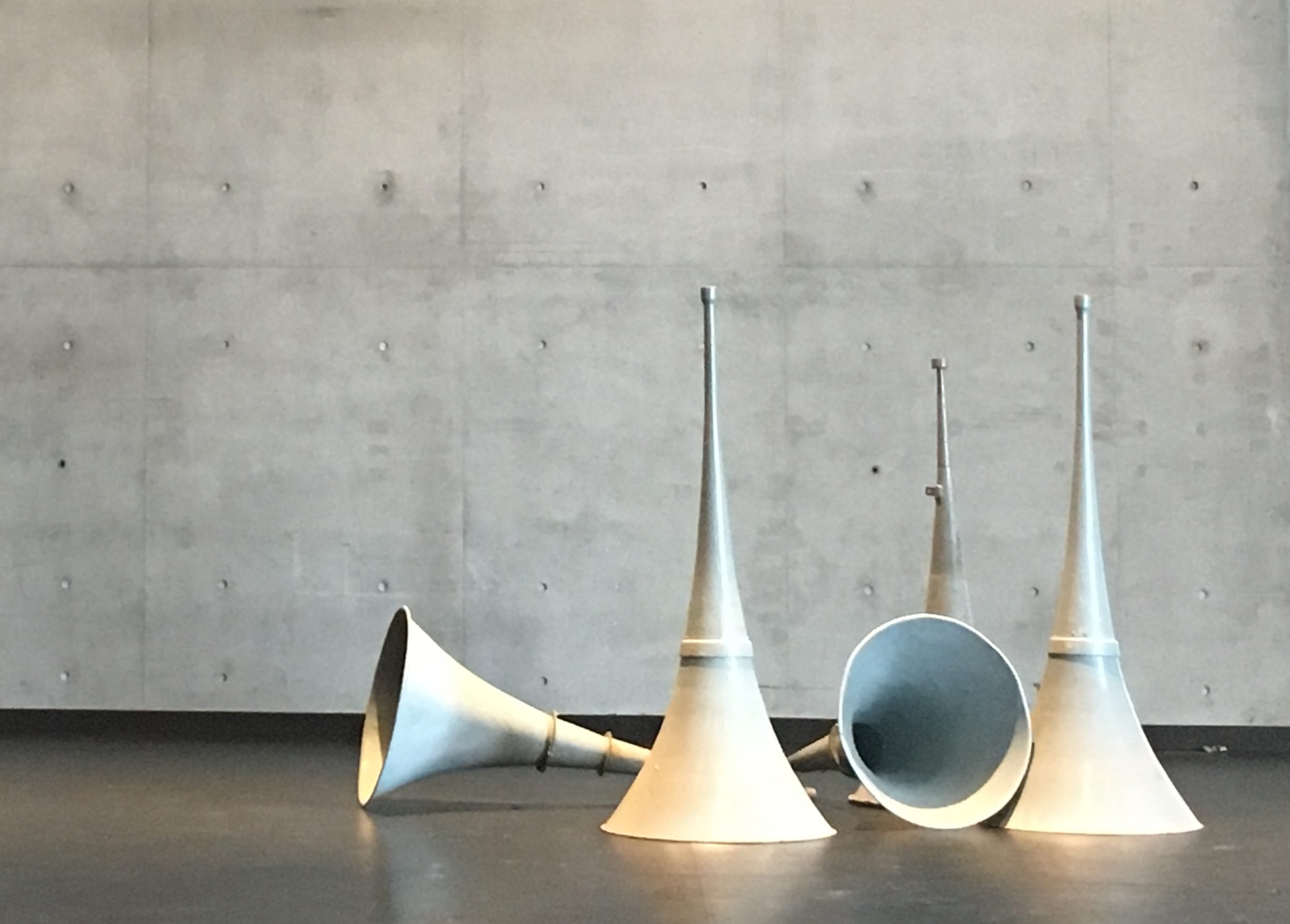
‘There’s no narrative, there’s no libretto, there’s no orchestra! A lot of the foundations of what you might call opera are not there.’
The Howling Girls is the latest in a series of multi-modal pieces that emphasise the creativity of their performers and co-collaborators. Fractured Again featured a glass artist and a video artist, while The Secret Noise was a fully staged work with actors and dancers. Damien sees his first opera as an extension of these explorations, while his work as co-artistic director of Ensemble Offspring, the lauded new music ensemble, has encouraged him to treat every performer as a potential multi-instrumentalist. ‘That’s the [percussionist]’s realm… always looking at objects around them and innately curious to ask what sounds they can produce.’
It’s a curiosity he shares, and he’s written far outside the norm, creating scores for arcane, old or exotic instruments, and even experimented with building his own. The score for The Howling Girls features a set of instruments that do more than produce sound. In a playful way, they respond to the themes of the work, and offer new opportunities to stage its ideas.
There’s a theremin, played by Jack Symonds, who also serves as musical director. ‘It’s a wonderful contradiction of being a gestural, physical instrument, without ever being touched. There are associations, with [Jack] being a conductor, with the notion of sign language and attempts to communicate. The piece ends with – rather than him controlling a specific melody – an attempt at sign language.
It features an instrument with the sound of raw fear: the Aztec death whistle. Damien’s journey towards this horror started with an article about psychological responses to sound. ‘People have used sound as a tool to create fear in others. You know the German dive bombers in the Second World War? That siren-like sound when they come at you-’ he makes the neeeewwww sound familiar from old war movies- ‘it’s not natural. They put baffles on the end of their wings that, as they accelerate, catch the wind and make this terrifying sound. It was… psychological warfare. I never knew.’
In the same article was a tantalising reference to an Aztec death whistle that took him down a Google rabbit hole. ‘Thank you, Internet! A few clicks later there’s a video, and it sounds like a B-grade splatter film scream. That’s great. I’ll get a few of those.’
Even a bass drum, which to the uninitiated has one function, takes on playful new roles in this score. ‘On one level it’s an amplified surface on which things can happen, whether they be scrapes or rice dropping… to more literal kinds of things, it gets whacked when Jane has her choking cadenza. You can literally view it as someone whacking you on the back, trying to dislodge what’s in your throat. The image I had was a defibrillator – the violence that comes with resuscitation.’
These seem like surprising innovations, but for Damien the real departure was going electronic. ‘It’s not my main shtick as a composer… but it was a conscious and logical response to these themes. If it’s about being inside Jane’s body, that immediately suggests a heavily amplified aesthetic, really feeling like we’re in her throat. I want a music that works directly on the body, and one of the most obvious examples of that are those sub-frequencies where you feel it, rather than hear it.’
He’s been assisted in this electronic direction by sound designer Bob Scott. ‘I give him sounds, mock-ups, and he’s been lifting it to another level. He’s almost like an orchestrator.’
It’s a fitting closing moment of modesty and generosity for a composer who places so much emphasis on the creativity of others.
